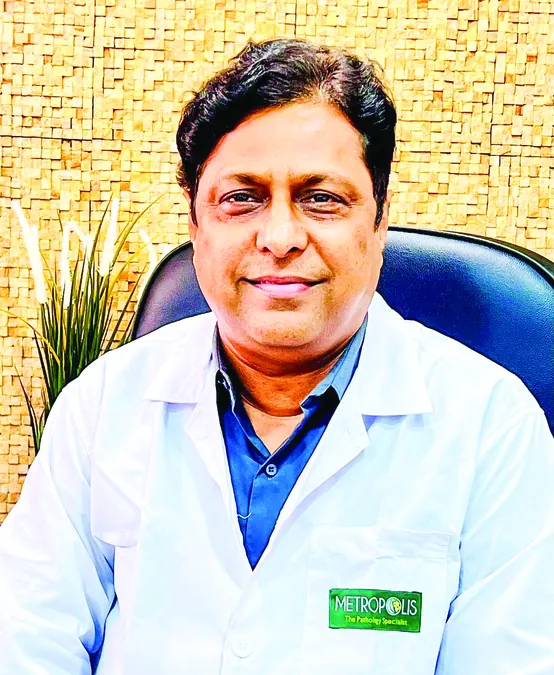
Unmasking the Silent Killer: Stroke Symptoms, Diagnosis, and Prevention Strategies
2024-10-26
Author: Siti
What is a Stroke and How Does It Differ from a Heart Attack?
A stroke occurs when blood flow to the brain is disrupted, leading to potential brain damage. This interruption can be caused by two main types of strokes: ischemic, where a blood clot blocks a vessel, and hemorrhagic, where a blood vessel bursts. Symptoms often include sudden paralysis, difficulty speaking, and loss of coordination. In contrast, a heart attack occurs when blood flow to the heart muscle is blocked, resulting in chest pain and other symptoms. Both conditions are medical emergencies, but their consequences differ significantly: strokes can lead to long-lasting cognitive impairments and physical disabilities, while heart attacks primarily affect the heart's function. Immediate medical care is essential for both but understanding their differences can lead to quicker and more effective reactions.
Recognizing Early Warning Signs: The FAST Method
Being aware of the early warning signs of a stroke is vital, as acting quickly can save lives. The acronym FAST can help you remember the signs: - **F**ace drooping (especially on one side) - **A**rm weakness (often more pronounced on one side) - **S**peech difficulties or slurring - **T**ime to call emergency services immediately Other symptoms may include sudden confusion, difficulty understanding speech, dizziness, blurred or lost vision, and an intense headache that occurs suddenly. It’s essential to seek medical attention promptly, as timely treatment can significantly reduce the risk of long-term damage.
How Are Strokes Diagnosed?
Quick diagnosis is critical for effective treatment. Typically, the process begins with a clinical evaluation, involving a review of the patient's symptoms and medical history. Imaging tests play a vital role; a CT scan is often used to identify bleeding in the brain, while an MRI can provide detailed insights, particularly for ischemic strokes in their early stages. Other assessments, such as blood tests and ultrasounds, may identify risk factors or blockages that could lead to a stroke, ensuring a comprehensive evaluation.
Lifestyle Changes and Medical Interventions: Your Best Defense Against Stroke
Preventing strokes requires a mix of lifestyle changes and, for some, medical interventions. Here are some strategies: 1. **Adopt a Healthy Diet**: Emphasize a diet low in saturated fats and high in fruits, vegetables, and whole grains. The Mediterranean diet, known for its health benefits, is particularly effective. 2. **Stay Active**: Regular physical activity plays a crucial role in maintaining a healthy weight and managing blood pressure. 3. **Quit Smoking and Limit Alcohol**: Avoiding tobacco and consuming alcohol in moderation can have significant health benefits. 4. **Manage Health Conditions**: For individuals with diabetes, maintaining stable blood sugar levels is essential. Additionally, those with high cholesterol or a history of heart disease may require medications like statins or aspirin to reduce the risk of stroke. 5. **Routine Check-Ups**: Regular health screenings and stress management are key components in maintaining overall health and reducing stroke risk.
Conclusion: Empower Yourself and Others
Understanding stroke symptoms and prevention empowers individuals to act decisively. A stroke can strike at any moment, but with swift action and lifestyle adjustments, we can significantly lower our risks. Raise awareness this World Stroke Day—because recognizing the signs of stroke could save a life!
 Brasil (PT)
Brasil (PT)
 Canada (EN)
Canada (EN)
 Chile (ES)
Chile (ES)
 España (ES)
España (ES)
 France (FR)
France (FR)
 Hong Kong (EN)
Hong Kong (EN)
 Italia (IT)
Italia (IT)
 日本 (JA)
日本 (JA)
 Magyarország (HU)
Magyarország (HU)
 Norge (NO)
Norge (NO)
 Polska (PL)
Polska (PL)
 Schweiz (DE)
Schweiz (DE)
 Singapore (EN)
Singapore (EN)
 Sverige (SV)
Sverige (SV)
 Suomi (FI)
Suomi (FI)
 Türkiye (TR)
Türkiye (TR)